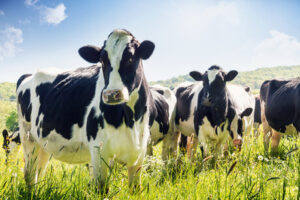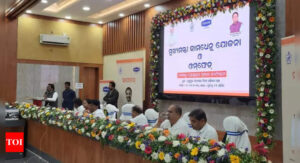

VARANASI: In a ground-breaking advancement for the dairy industry, researchers at the Indian Institute of Technology (IIT-BHU) and Banaras Hindu University (BHU) have unveiled a novel bioelectronic device capable of detecting urea contamination in milk with high sensitivity.
This revolutionary technology harnesses an unexpected resource—watermelon seeds—and utilises the enzyme urease to create a cost-effective, easy-to-produce, and highly efficient biosensor.
Led by Arvind M. Kayastha, Senior Professor at BHU’s School of Biotechnology, and Pranjal Chandra, Associate Professor of Biochemical Engineering at IIT-BHU, the team discovered the enzyme urease in watermelon seeds, which breaks down urea.
The breakthrough came from a simple conversation between the two scientists, which sparked curiosity and eventually led to the development of a urea-detecting biosensor that outperforms commercial alternatives.
“Our innovation began with something as simple as a casual remark about not throwing away watermelon seeds,” said Kayastha, adding, “From that small idea, we’ve developed a technology with the potential to dramatically improve food safety in the dairy industry.”
The idea that stayed with Prof. Kayastha and Prof. Chandra was executed into a realistic technology by the PhD students Prince Kumar at BHU and Daphika S Dkhar (IIT-BHU).
The watermelon urease enzyme was immobilised on a nanohybrid system consisting of gold nanoparticles and graphene oxide.
This gave the device enhanced electrochemical and bioelectronic properties, enabling rapid and accurate urea detection in milk samples without complex preparation.
The developed sensor is not only highly sensitive but also meets the detection standards of regulatory bodies such as the Food Safety and Standards Authority of India (FSSAI) and the Food and Drug Administration (FDA).
This technology could potentially transform on-site testing in dairy farms and processing facilities, ensuring faster and more reliable urea level monitoring.
The team has filed a patent for this innovative bio-recognition element-based nano-sensor. Their research has also been published in the Journal of the American Chemical Society (ACS), USA, further validating the sensor’s effectiveness compared to the current gold-standard DMAB method.
This breakthrough highlights the immense potential hidden in agricultural by-products and the importance of interdisciplinary collaboration.
The team’s success serves as a reminder that sometimes the most transformative ideas come from everyday observations—like the value of watermelon seeds most people throw away.





